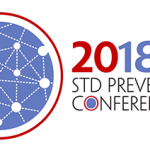 Last week, the 2018 STD Prevention Conference took place in Washington, DC. This biennial conference was an opportunity for sexual health professionals, including program staff, scientists, clinicians, and others to come together to share state-of-the art updates and practical, clinically-focused research on disease prevention and control at time when sexually transmitted diseases (STDs) are on the rise. The conference focused discussions around “Intersecting Epidemics, Integrated Solutions” by exploring the intersection between STDs not only with one another, but also with HIV, reproductive health, maternal-child health, and substance use.
Last week, the 2018 STD Prevention Conference took place in Washington, DC. This biennial conference was an opportunity for sexual health professionals, including program staff, scientists, clinicians, and others to come together to share state-of-the art updates and practical, clinically-focused research on disease prevention and control at time when sexually transmitted diseases (STDs) are on the rise. The conference focused discussions around “Intersecting Epidemics, Integrated Solutions” by exploring the intersection between STDs not only with one another, but also with HIV, reproductive health, maternal-child health, and substance use.
Combined diagnoses of chlamydia, gonorrhea, and syphilis increased sharply over the past five years and are at the highest number ever reported in the United States. In 2017, nearly 2.3 million cases of these STDs were diagnosed, compared to 1.8 million cases in 2013. Many more cases go undiagnosed, indicating an even greater disease burden. Undiagnosed STDs can lead to severe health problems, including infertility, ectopic pregnancy, and increased HIV risk.
Why are STD rates increasing?
The reasons behind increases in STDs are manifold. There is a lack of comprehensive sex education and discourse on STDs, especially in US schools. Sigma around sex and STDs remain a significant problem. Sexual healthcare and the policies that fund it are also in dire shape. Budget cuts at the state and federal level have caused at least 21 health departments STD clinics to close across the US, resulting in fewer people having access to testing and treatment provided by such clinics. Even as STDs continue to rise, funding allocated to prevention education and healthcare has not increased.
While greater investment is needed, greater diagnoses of STDs might reflect some positive aspects of the health system. Higher rates of STDs are likely in part the result of increased testing. Testing is the only way to know for sure if a person has an STD. If more people are tested for STDs, there will be more STD diagnoses. Additionally, laboratory technology to detect STDs is ever evolving, and improved technology in recent years may have contributed to more STD diagnoses. Similarly, performing the right kinds of tests can lead to improved detection. Swabbing the genitals, throat, or anus result can lead to detecting chlamydia and gonorrhea cases that would not be detected through a urine test.
What can be done about it?
An effective response to STDs in the US includes providing needed funding and resources to the Centers for Disease Control and Prevention (CDC) and state and local health departments, educating providers and the public about regular testing for STDs, and implementing policies that give everyone access to medical care and comprehensive sex education. There are also various ways to bring new innovations to the national STD response. Such innovations could include adopting testing-focused “express” visit models in STD clinics or mailed STD testing kits to reduce barriers to STD testing and treatment, increasing the capacity of disease intervention specialists (DIS) at health departments to have a workforce ready for emergency public health action, and expanding patient-centered clinical training through telemedicine.
Beyond these steps, I would like to draw attention to the importance of coupling the national STD and HIV responses. HIV programs are often separate from STD programs in the US, resulting in wasted energy and resources and missed opportunities for collaboration. STD clinics are critical sites for coordination of STD and HIV responses. These clinics are not only important for STD control, but also provide opportunities to reach those at greatest risk for HIV and link them to HIV treatment or pre-exposure prophylaxis (PrEP) for HIV prevention. When people living with or at risk of HIV are on HIV treatment or PrEP respectively, it is likewise important to ensure that they receive regular STD testing.
Coupling STD and HIV responses is not an easy task and would involve potential merging of funding, workforces, and information technology for STD and HIV programs as well as taking into account differences in program cultures and populations served. The O’Neill Institute is exploring policy issues related to maximizing the collective impact of STD and HIV strategies in the US. In the coming months, we will convene a dialogue around the growing STD crisis and work to identify policy priorities for federal, state, and local policy makers to strengthen their monitoring of STDs and HIV, improve their outbreak detection and response capabilities, and expand the development and adoption of comprehensive sexual health promotion practices and facilities. For future updates on this work, please check out our webpage.



